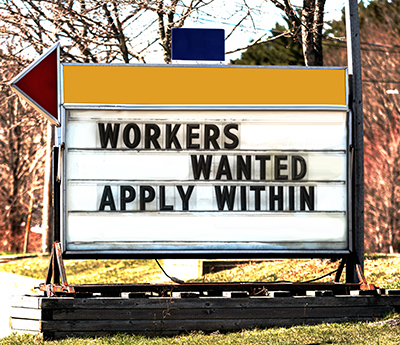

Challenges obtaining the raw materials and goods you need are a complex entanglement that’s affecting everyone in 2022. From aluminum to food products and fertilizers to plastic resins, businesses and consumers alike are feeling the strain. Some of the biggest sufferers of these economic disruptions are small businesses.
According to a survey by Software Advice, “nine out of ten small and midsize business (SMB) retailers feel that larger companies have an advantage over them in their ability to procure inventory.” Of these retailers, 50% say larger companies have this due to prioritized vendor status, and 45% say they’re limited in their ability to switch vendors.
Unfortunately, supply chain issues won’t be resolved anytime soon. To help small business owners, we’ve put together essential information regarding logistics and how you can navigate these challenges.
There’s no single root cause behind the supply disruptions we’re experiencing; rather, it’s an intricate web of events that created this environment.
The Snowball Effect of COVID-19
The global effect of COVID-19 created a significant imbalance between supply and demand. The mitigation measures that were implemented to minimize the spread of COVID-19 decreased the production of goods.
Facilities shutting down or decreasing staff for social distancing meant many factories couldn’t get all the materials they needed to export their products.
These mitigation measures also completely transformed how consumers spent their money. Instead of spending it on recreation or travel, consumers who were stuck at home used this cash towards home improvements and desired products.
This steep demand for goods effectively decreased a mass amount of inventory and led to a shortage of shipping containers, contributing to our current supply shortage.
The Great Resignation

The struggle to return production to pre-pandemic levels is connected to labor shortages. The US Bureau of Labor and Statistics states that as of March 2022, there were 11.5 million job openings. More specifically, job openings in durable goods manufacturing increased by 50,000.
In terms of warehousing, transportation, and utilities, which are essential to the supply chain, those job openings decreased by 69,000. However, separations also are taken into account, and these same industries saw 11,000 workers quit their jobs.
The American Trucking Associations (ATA) estimates there was a shortage of 80,000 drivers in 2021, and that number could double by 2030.
In short, there simply aren’t enough workers in the appropriate industries to balance out the current supply and demand.
If your small business is suffering from the current supply shortages, here are some strategies you can implement.
Diversify Your Vendors
Start exploring backup vendors. Ask fellow small businesses about their vendors, and if you can collaborate in a mutually beneficial way. Strengthen your relationship with your current vendors and ask how to improve your communication and navigate these challenges together.

Buy in Bulk
You can get ahead of supply chain challenges by buying in bulk. Making large purchases in advance will help you purchase less often and also reduce your shipping overhead. If you diversify your vendors, you may have the opportunity to choose from a wider selection of products.
If you need immediate funds to buy in bulk, small business loans are a great option. You can use the funds to expand your inventory and storage space, which will allow you to successfully meet customer demand.
Embrace E-Commerce
Look into digital retail and automation. Instead of using distribution centers, consider shipping from your store and using your current inventory for online shoppers.
For digital marketing and retail automation, keep a uniform presence across all channels and consider integrating an omnichannel order management system to keep stock consistent.
Promote Sustainability and Adjust Prices
Consumers are becoming more socially conscious and are increasingly interested in buying products that are ethically sourced and environmentally friendly. Promote your business’s sustainability to your consumers.
If you need to increase your prices to achieve profits, be forthcoming with your customers. People appreciate honesty and transparency, and faithful patrons will understand your reasons as a small business.
---
Ascentium Capital is committed to helping you find flexible financing options for your unique business. Whether you need to upgrade your tech or purchase inventory, our award-winning services will help you get fast access to the cash you need.
Get same-day approval with our simple application, or contact us to learn more.
